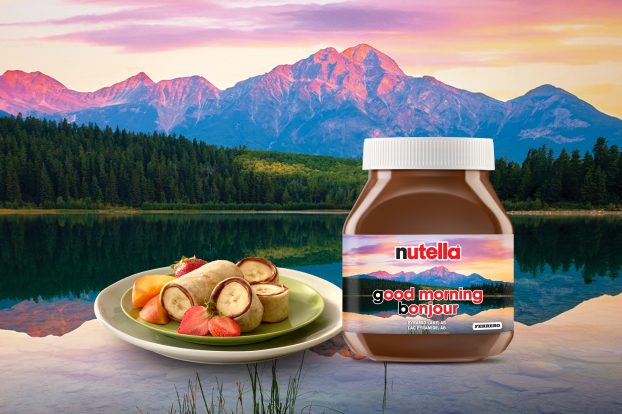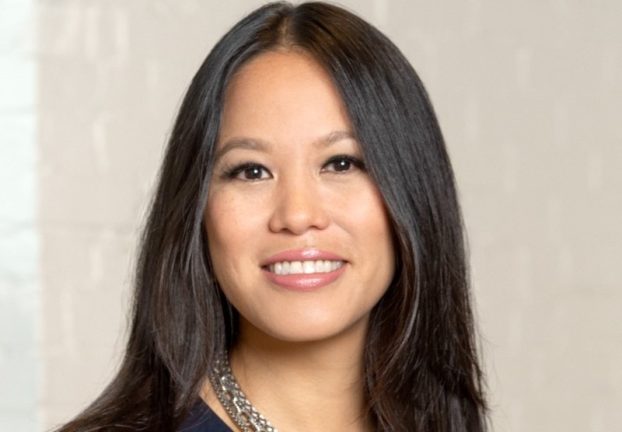The recent arrival of eight Best Buy locations in the Greater Toronto Area has proven to be ‘one of the most successful marketing openings [the retail chain] has seen in its history,’ reports Lori DeCou, director of corporate communications for the Vancouver-based Canadian subsidiary.
‘We officially opened seven stores on one weekend [Oct. 25], and we had hundreds of people in line before the doors opened at every one; it was the type of frenzy you would see on Boxing Day.’
DeCou says the company doubled store traffic expectations, and beat sales targets by 50% in the first weekend. She credits this achievement to a significant media buy, which exceeded a typical Best Buy ad budget in a given market by 50% for the two weeks prior to the launch.
Awareness of the electronics retail brand in the GTA was next to none, which is naturally why a strong marketing thrust was necessary. But Best Buy also treated its entry into the GTA as its foray into all of Canada. The retailer has plans to operate 75 units across the nation within five years. Says Decou: ‘It was how do we land a brand that nobody knows about in Canada? Our scope wasn’t just the GTA, our intent was to land the brand and enjoy the ripple effect [nationally].’
South of the border, where the Eden Prairie, Minn.-based parent retailer recorded a 20% climb in total sales for the second quarter of fiscal 2003, top-of-mind awareness for Best Buy was at a healthy 35% in early 2002. Furthermore, 25% of consumers preferred the chain’s advertising to that of other retailers who peddle electronics, like Circuit City, Wal-Mart and Sears, according to the company’s Web site.
Here in Canada, Best Buy’s ‘Turn on the fun’ campaign is in line with the well-received U.S. strategy. The rationale behind the first five TV spots was to educate Canadians about the brand. For instance, one ad has a giant, bright yellow foam price tag – the Best Buy mascot – informing Torontonians about the company’s non-commissioned sales force, while the CN Tower looms in the background. The commercials were all unscripted in order to facilitate more of a spontaneous, playful exchange with passersby, and radio creative used the same approach. In addition, street teams tried to drum up attention on Toronto’s bustling streets. ‘They started a week before grand opening, and their task was to play games with people, and get our message out, but with a different attitude,’ says Stephanie Zahn, senior marketing manager, who explains that the guerrilla tactics were also ad hoc.
There were two different types of teams – one catered to a younger consumer segment, presenting them with branded gear and free tickets to an Our Lady Peace concert, which Best Buy hosted at the Air Canada Centre on Nov. 1. (Twelve thousand tickets were distributed.) Other crews handed out $5 gift cards to older folk who likely weren’t partial to a deafening rock concert.
The ‘fun’ phenomenon was also incorporated at retail during the launch period with visits from high-profile celebrities, like Spider-Man and Toronto Raptors star Antonio Davis.
And Best Buy’s permanent ambiance, being ‘very open, bright, full of sight and sound, with music [blaring] and video screens all over the place,’ plays into the theme too, says DeCou. There are plenty of interactive elements in the stores, which average between 30,000 and 36,000 square feet, where shoppers can ‘try products on,’ and the aisles are wide so they can easily ‘grab ‘n’ go.’ Outdoor advertising carried the message ‘try before you buy,’ to highlight this advantage.
DeCou points out that, along with the non-commissioned salesforce, the stimulating environment and a larger entertainment section, stacked with CDs, DVDs and video games, are what differentiate the brand from Future Shop, which also falls under the Best Buy umbrella. (The U.S. company swallowed the Canadian chain for $580 million in August 2001.)
Future Shop’s target is a predominantly male shopper between 25 and 49, with a $50,000 household income. Best Buy skews a bit younger, to 15 to 44s, although it also concentrates on males with a similar income status. However, Best Buy carries mainly low- and mid-price items and defers the sale of much of the high-end brands to its Canadian-born counterpart.
So far, Best Buy hasn’t had any adverse effects on Future Shop. In fact, DeCou hints the retailer’s debut was beneficial to the Canadian chain: ‘Future Shop did not experience negative traffic or sales as a result of the grand opening. In fact, often when a competitor opens, it increases the overall size of the market, drawing more traffic to the trade area.’
In the GTA, like other communities, charity plays a major role in Best Buy’s marketing strategy. Overall, the parent firm’s charitable giving has ballooned from US$1.8 million in fiscal 1998 to US$14 million in fiscal 2003.
‘We think it’s very large,’ says DeCou. ‘We want customers to know we’re good corporate citizens, and it also establishes pride with staff, who feel good about working [at Best Buy].’
But not just any non-profit organization will do; the group must fulfil Best Buy’s philosophy, which is to support children in a mentor or educational capacity. The company also targets national charities, because this enables the adoption of programs from community to community as the retailer expands. ‘We find ways to impact young individuals proactively in their lives,’ says DeCou. ‘The future is about youth. I think technology products are about the future [too]. So it’s a fit from a corporate conscience point of view.’
For each store that was unveiled in the GTA, Best Buy donated $10,000 to a local United Way chapter to use for projects that fit the mandate. Meanwhile, $150,000 was earmarked for the Big Brothers and Big Sisters of Toronto’s in-school mentoring efforts, which has volunteers take youngsters out of class for an hour of ‘quality time’ each week. ‘It involves activities that are fun for kids, [such as shooting hoops], and it makes a difference in their lives,’ says DeCou.
How does Best Buy share news about its good deeds with patrons? At the check out a huge sign proclaims, ‘Best Buy is committed to kids and the community,’ and alongside that are two others depicting each of the charities’ logos.
Overall, Best Buy has been effectual at conveying its attributes, says Unionville, Ont.-based retail analyst Richard Talbot. While the product assortment and layout is similar to that of Future Shop, he believes stressing the distinction between a commissioned and non-commissioned staff is smart.
‘Some people are happy in [a sales-commissioned environment], and others are uncomfortable,’ he explains. ‘Best Buy doesn’t have the same piranha attitude as Future Shop…and I think they will be able to get the female shopper, and the neophyte electronics buyer. For those who know what they want, they really don’t care where they buy. It meets two different kinds of markets, which is probably good.’
Still, Talbot says some cannibalization is inevitable, and he foresees a day when Future Shop will disappear altogether from the Canadian retail landscape. ‘We’ve seen it with Business Depot/Staples, Costco/Price Club, and a whole range of retailers who eventually evolved to a U.S. name,’ he points out. ‘They tend to [wind up with] a solid brand.’























